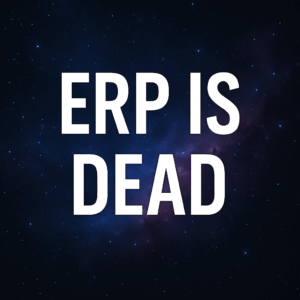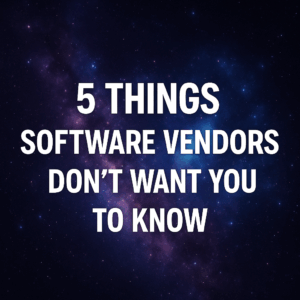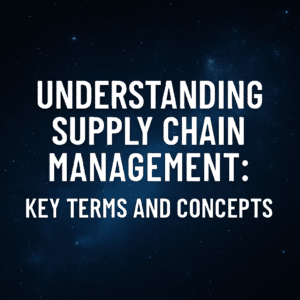As our current business climate continues to move through a time of immense change, we have experienced a new emergence of Organizational Change Management needs from our clients. It’s very easy to get caught up in the technical details of a digital transformation, especially as an internal stakeholder, and potentially overlook the basics of preparing your organization to go through a significant adjustment – such as a digital transformation.
To cut through the methodological weeds of ERP and business transformations we need to go back to basics and focus on the fundamentals to ensure an ERP implementation does not experience failure due to an unprepared workforce. Below are a few tactics that can help realign and provide clarity to your change plan and ensure success of digital strategies.

Table of Contents
ToggleAssess, Assess, Assess
It’s impossible to build a strategic plan for any business initiative if there is no starting point. Understanding how your organization feels / views process or system changes is absolutely pivotal to crafting the foundation for a successful ERP, CRM, HCM, etc. implementation or adoption.
Another important consideration about a readiness assessment is understanding the importance of autonomy. We’ve all received those awkward job satisfaction surveys from HR in which the results go directly to our supervisors so they can monitor our contentment with our role. No one is 100% honest when the data is captured internally, which provides an incomplete picture and makes the entire exercise pointless. Investing in a third-party partner to execute OCM initiatives is a best practice to guarantee the right questions are asked and the most valuable and actionable data is procured.
Build Out a Clear Communication Plan
Once you have your assessment data, you’ll want to build out a clear and consistent change plan. It’s critical that you have executive alignment and buy-in to be sure all facets of the business are affiliated on how they will communicate and engage their prospective teams.
There should be a variety of communication layers in your strategic approach. An email informing your organization of a system or process change and demanding that they integrate these new business procedures into their role is not effective and could create resistance. View your change plan as a sales pitch to your community.
- Why is this new system important?
- What efficiencies will it create?
- How will it benefit your organization?
- How will this change stimulate growth?
Identify Any Areas of a Resistance
Often the assessment data will highlight some business areas, departments, even specific people that could be catalyst to creating resistance. “Resistance” can be an aggressive term (be sure to check out our blog on the types of resistance) as it can be visualized as some sort of melodramatic upraising. However, resistance can also manifest as fear of a new processes / systems or the feeling of devaluing a certain role. In our current climate of furloughs and high unemployment, team members could view a digital transformation as a threat to their livelihood, which produces conscious or unconscious resistance.
This is why is it so important to get in front of any opposition right out of the gates. Once you identify potential group of resisters:
- Schedule a town hall meeting to address any budding concerns or questions about the business transformation.
- Offer additional workshops and training for the new software systems.
- Provide an opportunity for a department representative to be involved in the selection process to ensure the groups’ prospective is effectively communicated.
- Set up a direct method of communication so they have access to ask questions or raise concerns throughout the transformation process.
- Overemphasize their value – ensure that your management team is engaging in regular recognition tactics.
This video helps explain this concept in more detail:

Empower Ownership
One of my favorite OCM terms that I like to arm my clients with is: the art of the Jedi Mind Trick. Change is all about perspective and influence is birthed from perceived value. Similar to crafting a change plan as a pitch, empowering your business communities to own their specific role within the transformation will not only ensure that your initiatives are more successful but also encourage positive influence within your company’s subcultures.
For example, if an influencer in your finance department is charged with becoming a subject matter expert for a new ERP system and tasked with training her team – this may create a more positive adoption experience as opposed to a senior member of the company directing the department to change procedure. The carrot vs. stick methodology.
Just like an Amazon Review – we are inherently more likely to trust and embrace new recommendations or behaviors from our peer influencers.
Invest in a Partner
I often hear executives say they can executive change management initiatives internally. I get it. Why wouldn’t leaders of an organization be able to garner unbiased data on their own employees? Well it’s just not that simple.
We have triaged botched change initiatives because the assessments results were inaccurate, and implementations have failed simply because employees didn’t feel that they have autonomy, or the right questions weren’t asked in initial assessments.
Investing in an expert support system or building OCM planning into your overall ERP implementation strategy is a key best practice.
Summary
Tuning into the basics of organizational change management will help to streamline your digital transformation and ensure the success of your ERP implementation.
Questions about OCM or any additional digital transformation needs in general? Please feel free to contact us to discuss your change management or transformation initiatives. We are happy to help!





